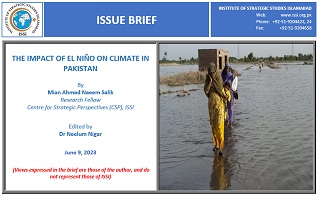Background
El Niño is a climate phenomenon that refers to the warming of the central and eastern tropical Pacific Ocean, specifically the surface waters. It is a natural event that occurs irregularly, typically every two to seven years, and can last from several months to over a year. El Niño is part of a larger climate pattern known as the El Niño-Southern Oscillation (ENSO). During a typical El Niño event, the warm oceanic waters shift eastward, altering the atmospheric circulation patterns in the region. This can have significant impacts on weather patterns around the world.[1]
According to the World Meteorological Organisation (WMO), there is a 60% chance for a transition from ENSO-neutral to El Niño during May-July 2023, and this will increase to about 70% in June-August and 80% between July and September. The development of an El Niño will most likely lead to a new spike in global heating and increase the chance of breaking temperature records. No two El Niño events are the same and the effects depend partly on the time of year.[2]















